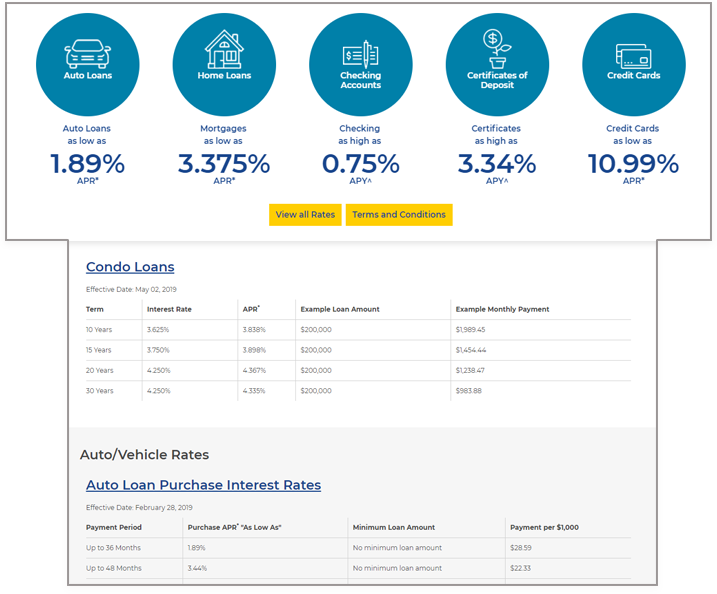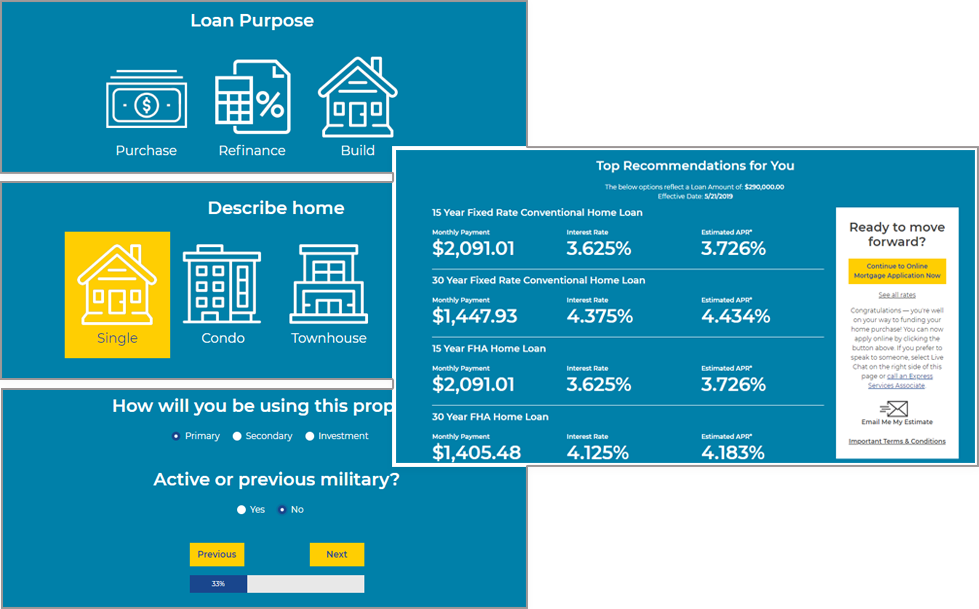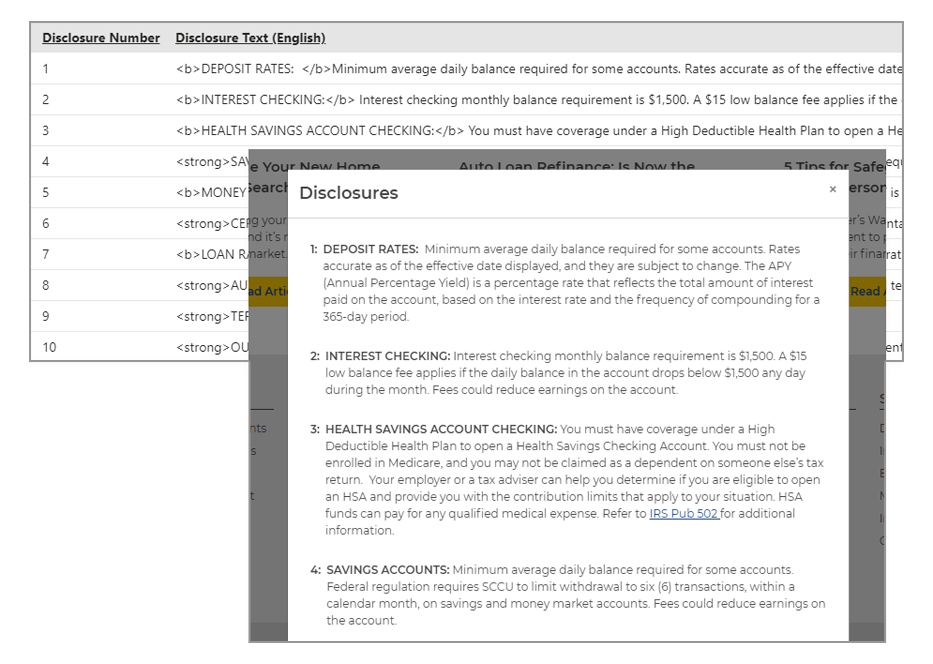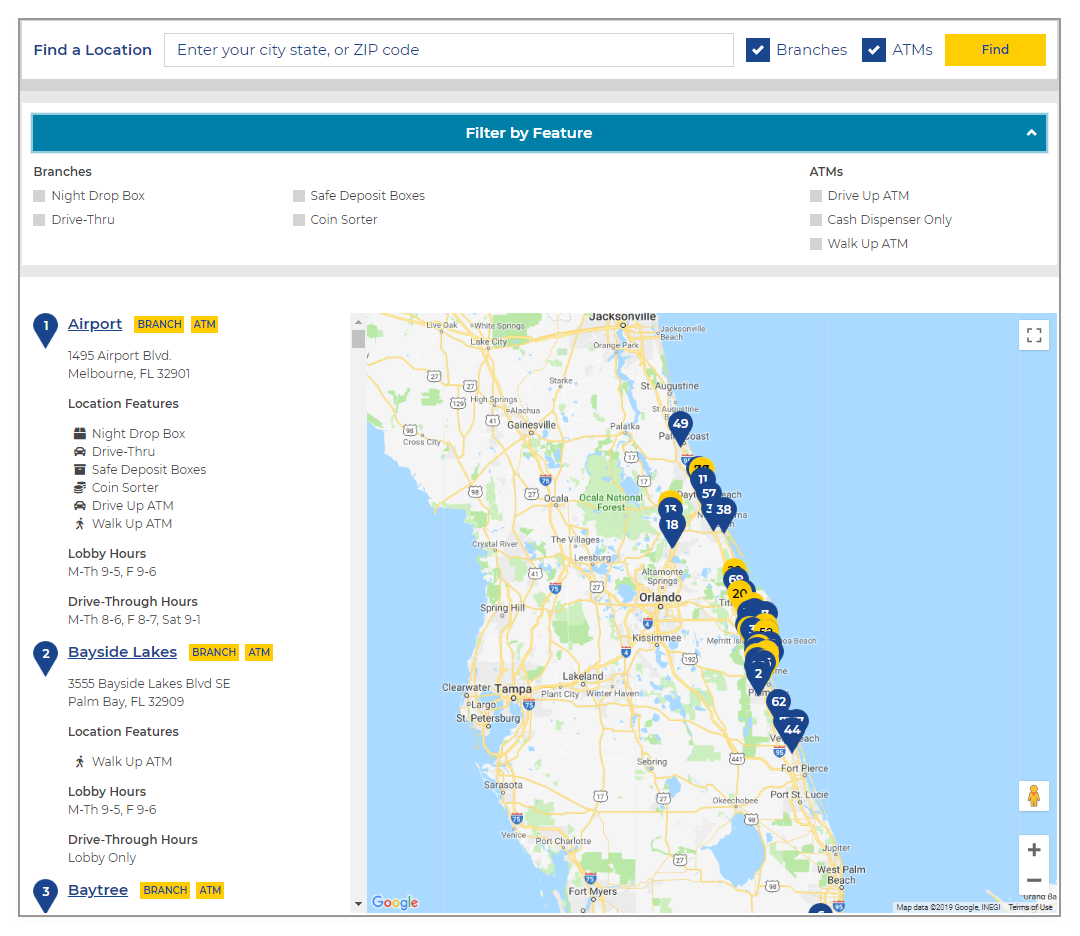Posted on 5/21/2019 in Business and Strategy
By Corey Furdon
Are you a banking organization that is about to embark on a website redesign project? Or are you looking to make upgrades that will improve the user experience for both your visitors as well as for your website managers? You may also be looking to save money or the cost of managing your site. We’ve put together the top 5 must-have features that every banking organization should ensure to include on their site.
1) Global Rate Management

Global Rate Management is a concept where all rates are stored in one centralized location and then dynamically disseminated out to other pages on the website. In other words, manage all of the rates that appear across your website in one location, instead of on individual pages.
Rates fluctuate with the markets which result in often daily rate changes, especially for mortgage products. If you’re displaying rates on your website then your rates may need to be adjusted frequently. If you offer many different products and each product has rates associated with it, then you might be looking at having to update a plethora of pages daily just to keep up! With a Global Rate Management structure in place, your content editors will be able to make rate updates in one centralized location that will then automatically populate in different tables across your site.
For more complex websites and product offerings, a Global Rate Management structure offers the potential for automation as well. With all the rates located in one table, it makes it possible to either query a third party data source for the values or build an import process into your CMS.
2) Product Recommender

A Product Recommender is a tool to help your website visitors narrow down your products to what best fits their needs by answering a series of questions. It is an interactive user experience that, question by question, narrows down your product offering and ultimately presents the visitor with the product that best matches the answers they provided. It is a great way to engage your users and give them something “fun” to do on your website.
If your organization offers several products within the same category, such as mortgages, a Product Recommender gives you an opportunity to make a personal recommendation based on a user’s inputs. It is an experience akin to having a conversation with a salesperson or consultant without needing to support extra resources.
The Product Recommender also presents you with an opportunity to increase your website conversion rate by collecting email addresses. This gives you an avenue to further the conversation with the website visitors who utilize the tool. At the end of the recommendation experience, the user can email their results and any other content you’ve provided.
3) Global Footnotes

The Global Footnote feature is a way to globally manage and quickly assign footnote notations and content to the corresponding text on your website. It also allows for all of the footnote content to be available to the website visitor on every page. Using this feature, the website visitor clicks on a footnote superscript which opens a modal and anchors the user down to that specific footnote text within the modal. This experience allows for the footnote content to be viewed right where they are, instead of forcing the website visitor to scroll to the bottom of the page to read the notation.
As a bank, it’s likely that you’re sharing rate information and other content that requires a footnote or disclosure. While most consider footnote content to be just that – content. But depending on the number of footnotes you need to have on your site, that content can become difficult to manage. The Global Footnote feature provides a single location where you can enter and manage all of your footnote text. The CMS editor can then easily assign the proper footnote text to the content that needs to be annotated.
4) Curated Search

Curated Search is a feature where common search terms or phrases are presented to the website visitor to select from instead of having to rely on the general site search box. The website manager periodically monitors what website visitors are searching for on their website. Then this feature creates a list of the most commonly searched terms and maps that to a page on the site that will best answer the search query.
Curated Search can be incredibly powerful for both the website visitor as well as the website manager. If a website visitor is looking for something specific, such as the bank’s routing number, it is much easier to select “What is the routing number” from a pre-populated list of search phrases, rather than having to sift through numerous search results. For a website manager, this feature presents an opportunity to guide them to content on your site that you wish them to visit without being overly intrusive. Setting up the Curated Search feature to have a “How can we help you” message creates a sense of “we’re here to help” for your website visitors.
5) Location Finder

The Location Finder is where your website visitors can browse your branch and ATM locations and find the location that best fits their needs. Most Location Finders allow the website visitor to search for a location-based on their zip code or address. Larger banking organizations also typically present additional filters for the website visitor to narrow their search by, such as Drive-Thru services, Walk Up ATM, etc.
The Location Finder feature allows visitors to efficiently find the branch or location of your organization that best fits their needs. The more you present to the user via the Location Finder, the more accurate your user's search will be. Be sure to consider including multiple facets or features by which the website visitor can narrow down their results. You’ll also want to include an interactive, such as an integration with Google Maps API. The map makes it easier for the website visitor to browse your locations.
Need help with your website redesign project?
Our experienced team can assist you with all of your web and digital marketing needs.
Related Articles

Outdated or Outstanding? How to Tell If Your Website Needs a Refresh
Your website is the digital face of your business. It serves as a first impression, a marketing tool, and a resource for potential customers. [...]

Preparing a Website Redesign Budget for 2025: A Step-by-Step Guide
As we approach 2025, businesses are recognizing the necessity of a fresh, user-friendly website to stay competitive in a rapidly evolving digital [...]

Demystifying SPF, DKIM and DMARC: Strengthening Email Security
With Slack and other instant messaging services handling more and more of our online communication, email can sometimes feel like a newspaper being [...]

